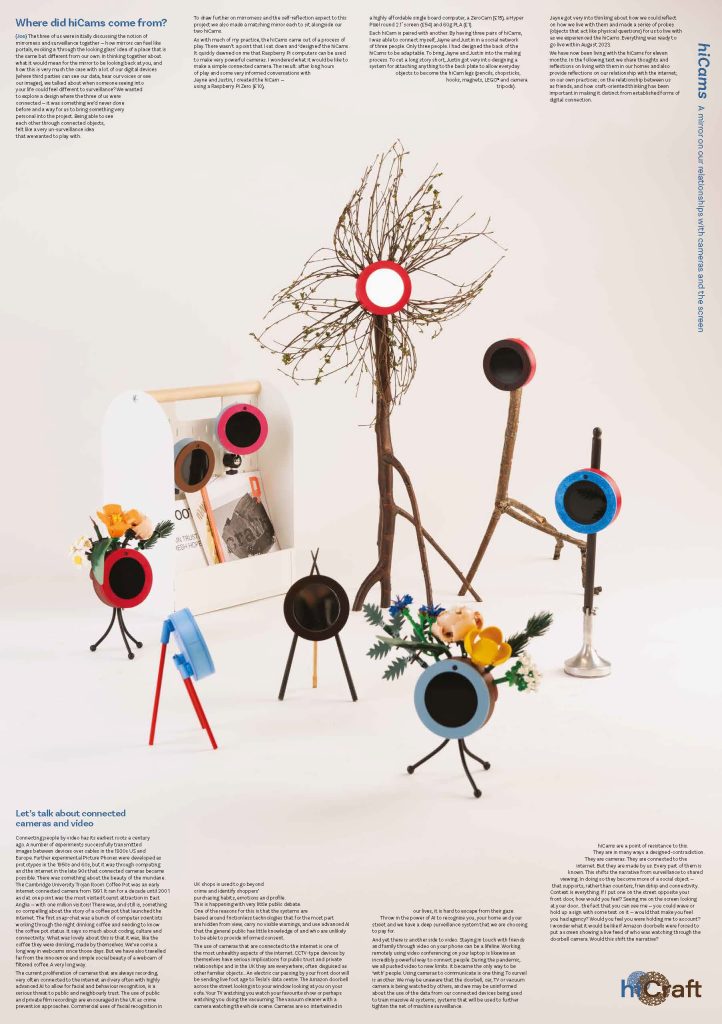hiCams: a mirror on our relationship with cameras and the screen
– Jon Rogers, Justin Marshall & Jayne Wallace
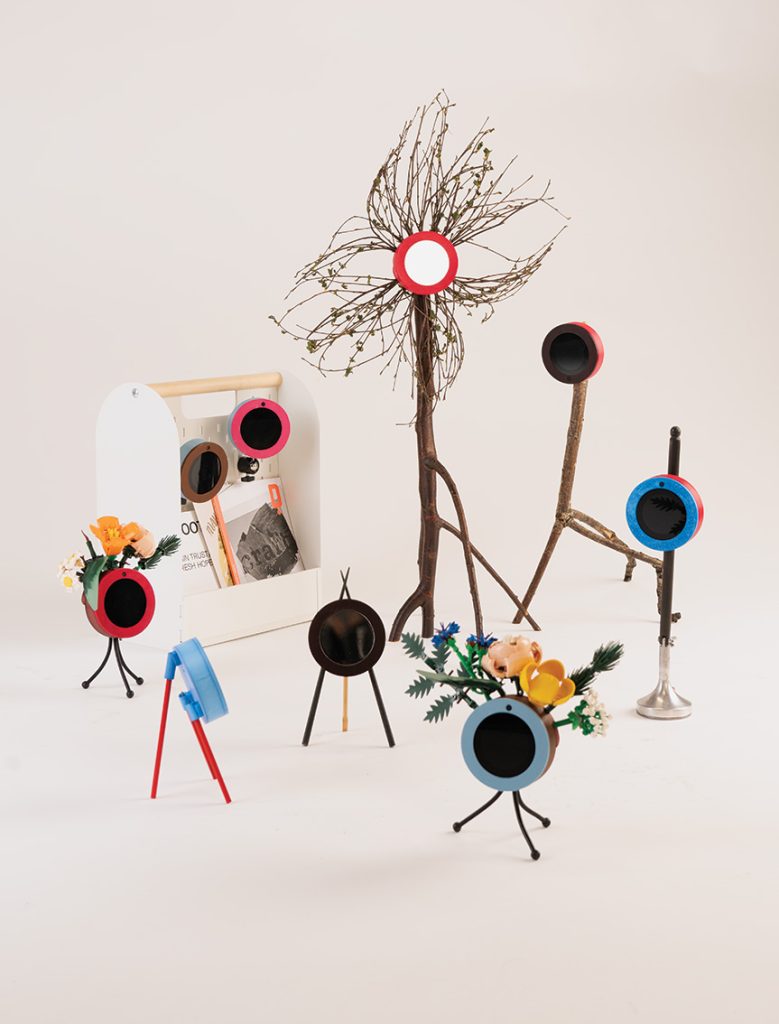
What are hiCams?
hiCams are a closed network of interconnected cameras, screens and mirrors. A camera on one hiCam sends an image to a screen on another. Within the network each pair provides a one-to-one viewing experience. Connection between them is direct — there is no third party (a server) that mediates the communication. Based on a Raspberry Pi Zero, cheap(ish) open-source components and the home 3D printing of parts, we aspired to make hiCams an accessible open technology, distinct in function, aesthetic and ethos to equivalent commercial offers.
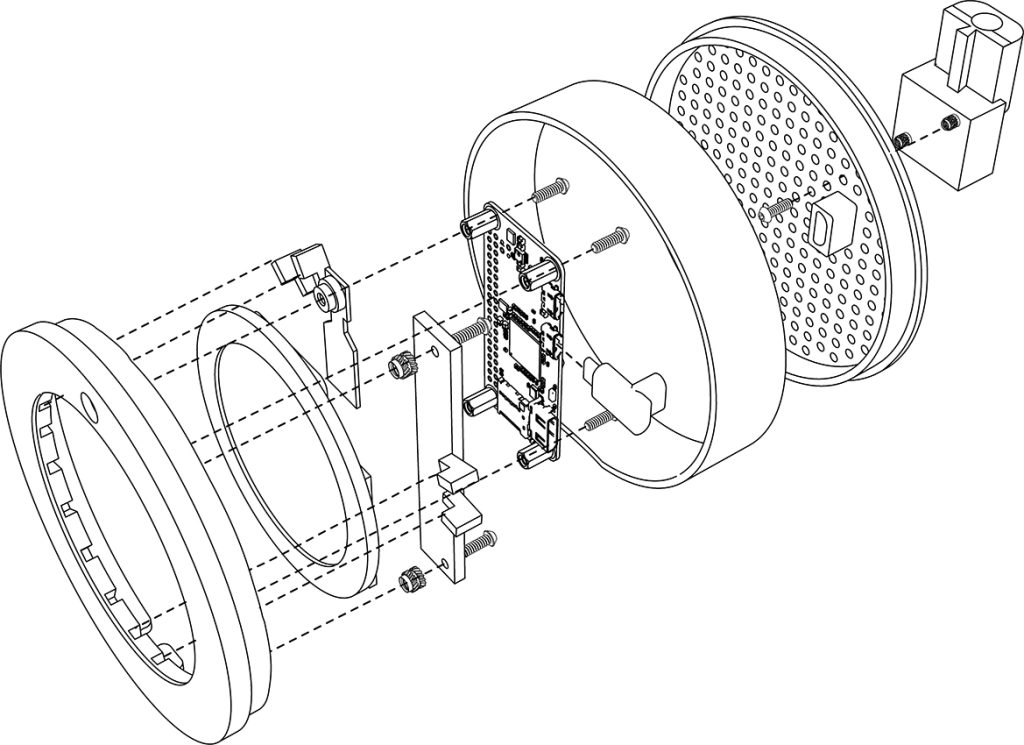
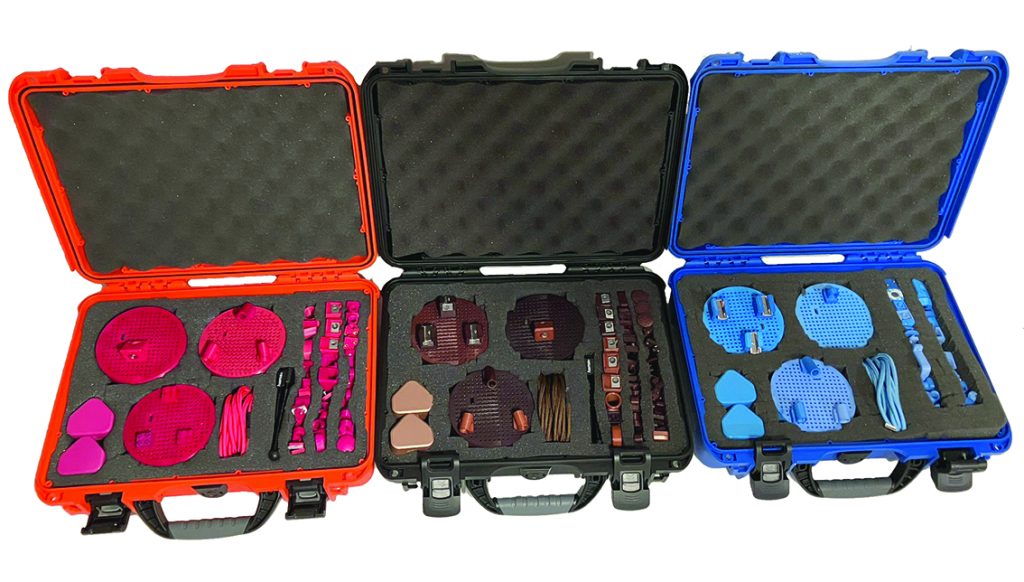
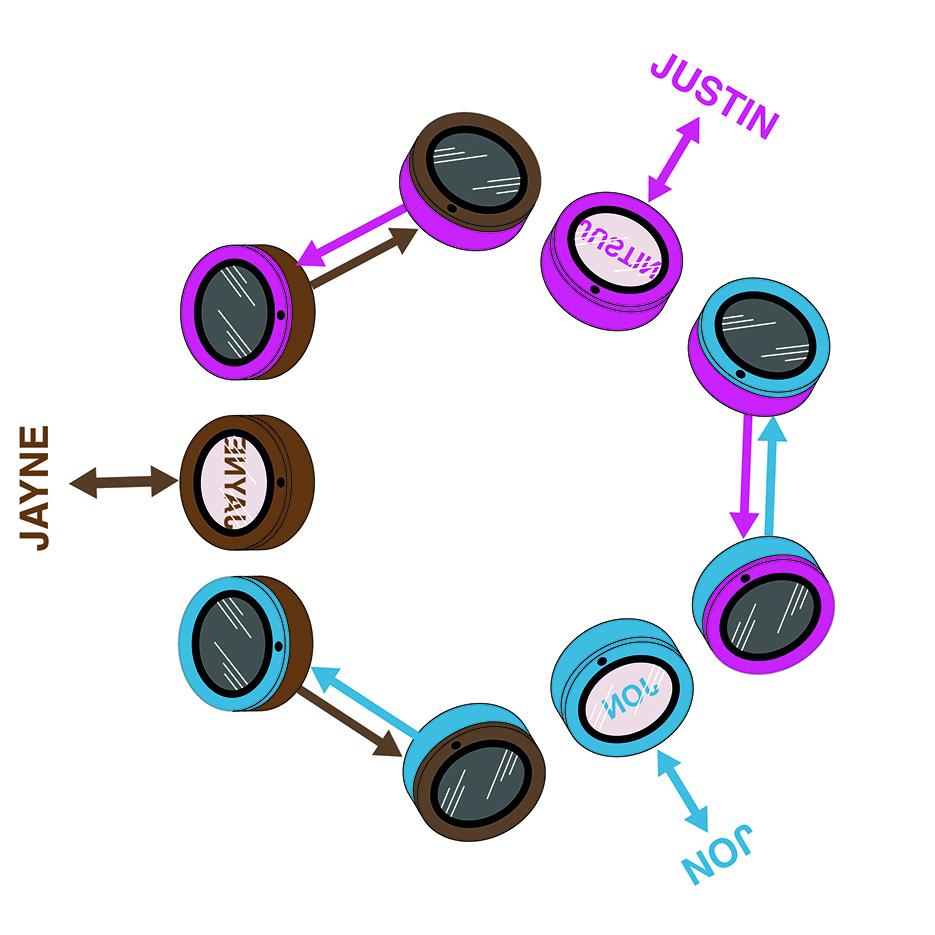
Where did hiCams come from?
Three members of the research team (Jon, Jayne, Justin) initially discussed the notion of mirrorness and surveillance – how mirrors can feel like portals, evoking a ‘through the looking glass’ idea of a place that is the same but different to their own. In thinking about what it would mean for a mirror to be looking back at you, and how this is very much the case with a lot of our digital devices (where third parties can see our data, hear our voices or see our images) they talked about when would someone seeing into your life feel different to surveillance?
They wanted to explore a design where the three of them were connected – so bringing something very personal into the project and being able to see each other through connected objects, felt like a very un-surveillance idea and an interesting space to explore.
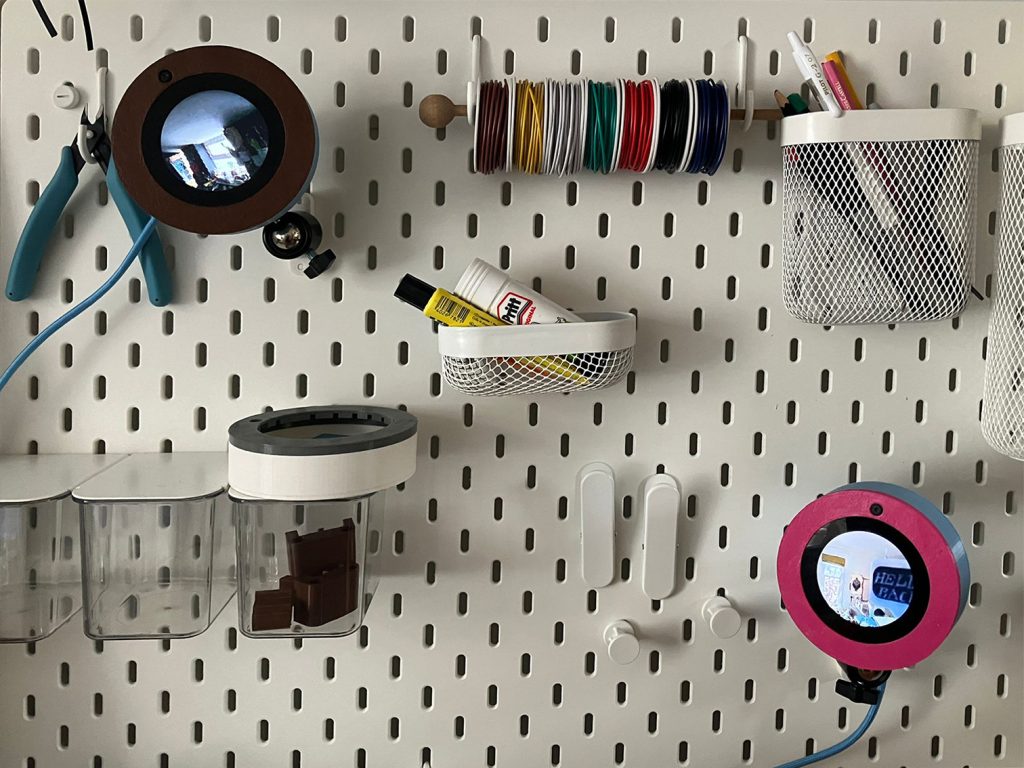
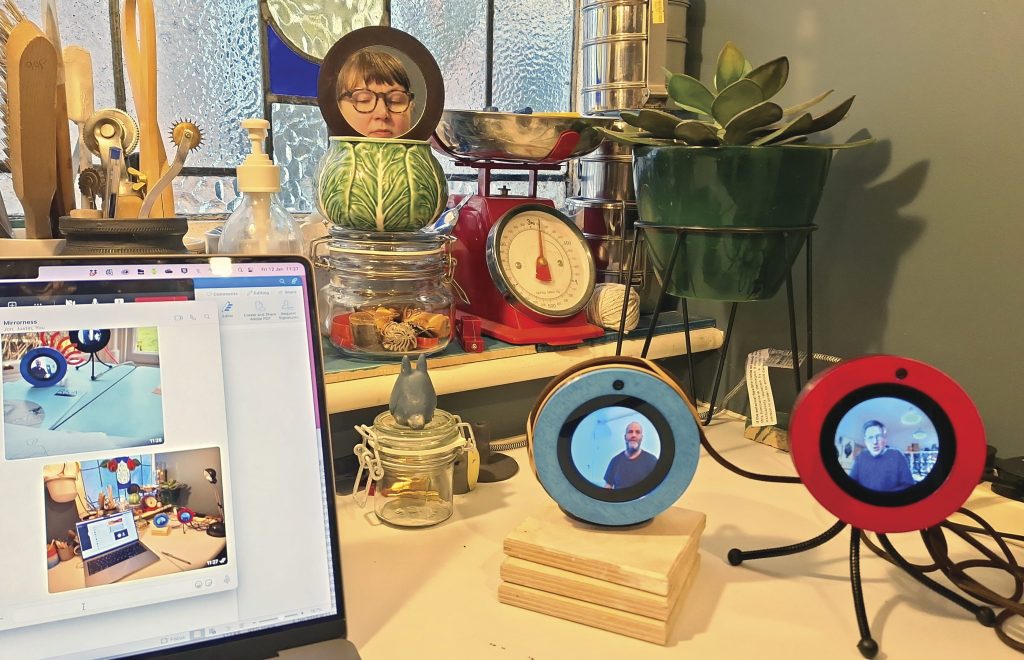
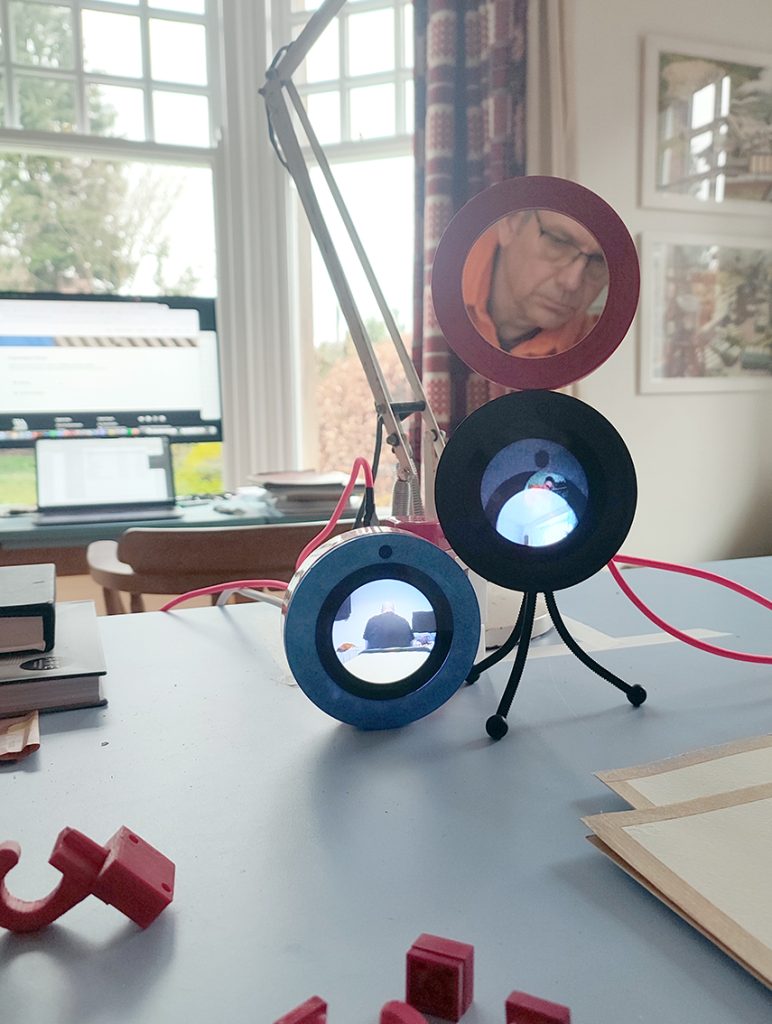
The hiCam experience
HiCams have no audio, use lo-res cameras, have a slow screen refresh rate and do not record content. So in terms of quantitative measures it could be argued that they provide a low quality experience. However, it is through exploring these limitations within a trusted micro social network, that we were able to focus, and reflect on, what it means to digitally connect. Therefore, in qualitative terms the use of hiCams provided a rich and varied set of experiences that we recognised as meaningful and valued.
The hiCams have a grid of holes in their back plates that align to the standardised 0.1” hole separation found in 2D perfboard and breadboards and used as the foundation for circuit prototyping. We used this opportunity to create a range of components that provided the opportunity to attach devices both to established manufactured products (e.g. camera tripod stands, IKEA peg boards etc.) and to other more unusual, and less industrially standardised items, with hooks, eyelets and other attachments. While some where practical and functional, many were more playful, humorous, but they did provide the opportunity for us to explore personal aesthetic and materials preferences and lean into our craft/making skills. See pegBits project and poster for more details.
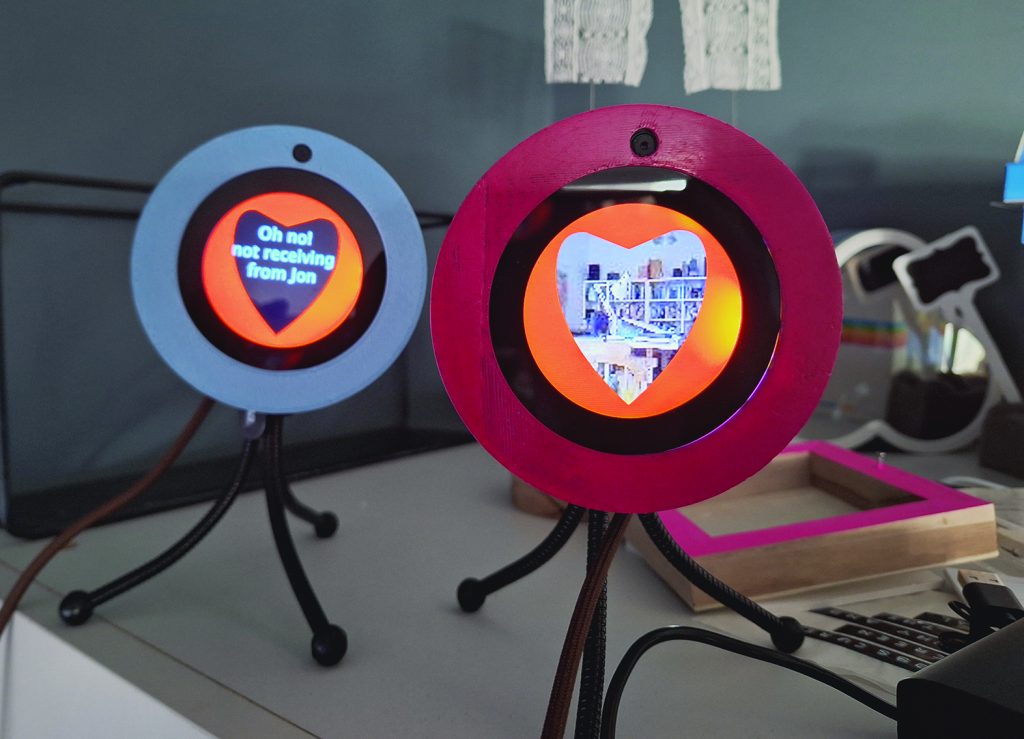
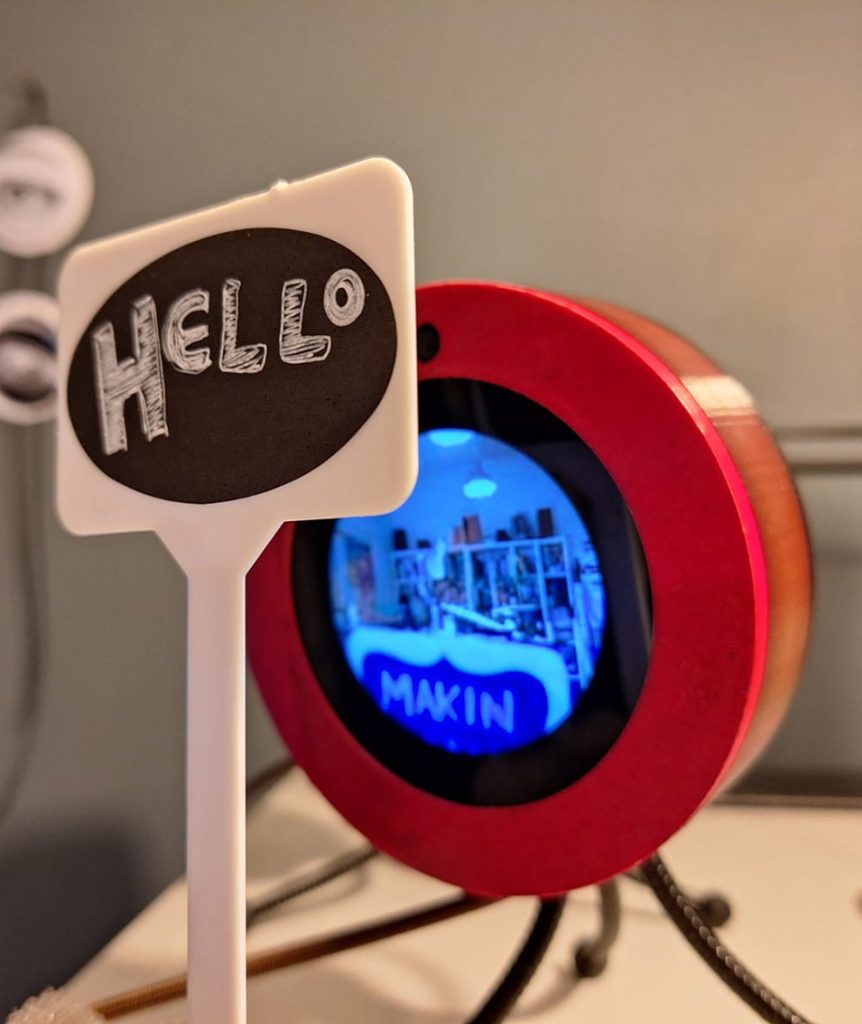
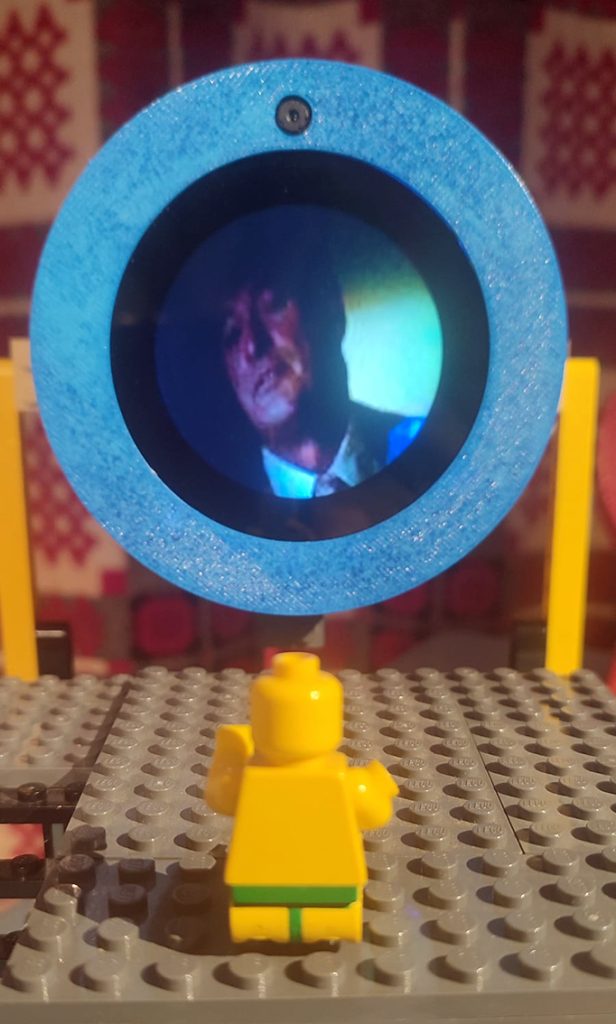
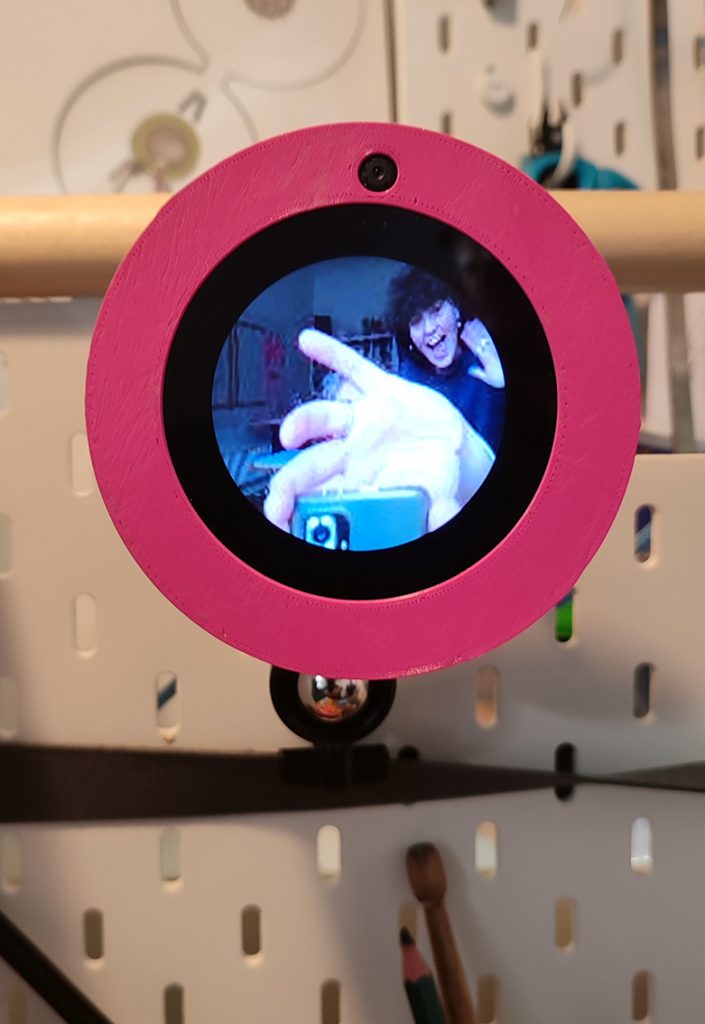
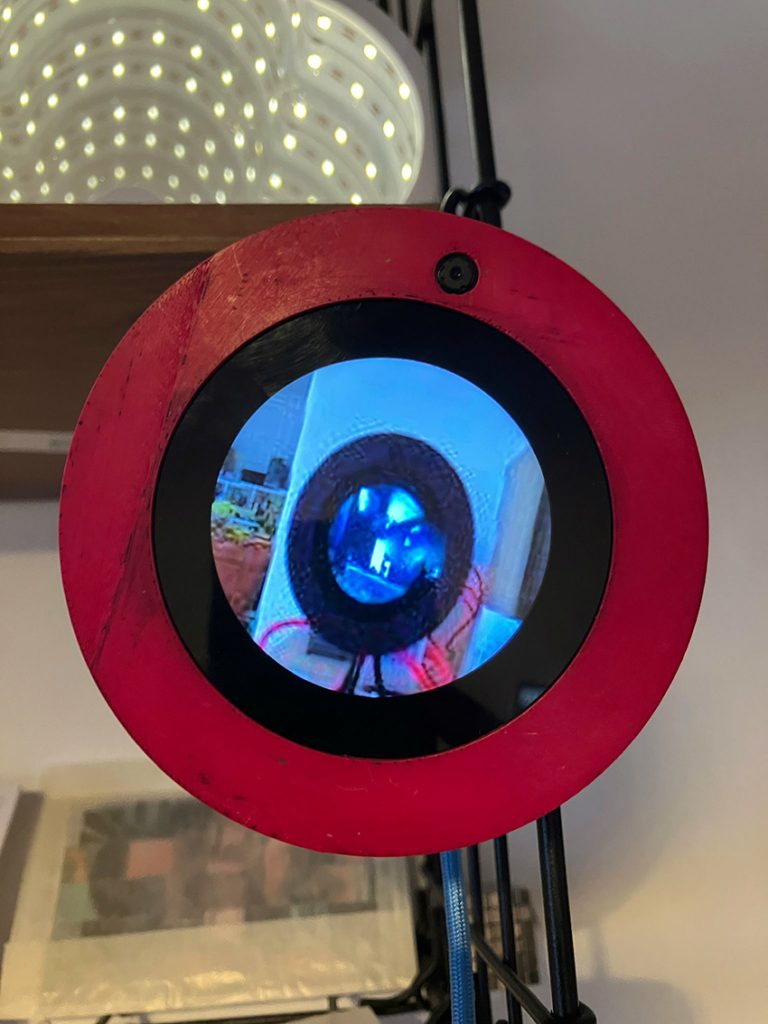
Living with our HiCams over an extended period has provided a distinct flavour of connectedness that, on reflection, we believe aligns to the craft ethos that underlies this work and the wider hiCraft project – specifically:
- Care, in the making and in the nature of authentic (and friendly) interactions that the hiCams facilitated.
- Celebrating the qualitative ‘lo-fi’, but human, experience over a desire for quantitative functionality
- Augmenting and making bespoke the forms in ways that were practical, exploratory and context specific, while also aesthetically rich and nuanced
- Being explicit about provenance through knowing (most of the time!) who was controlling what, and circumnavigating external third party servers and the opaque systems of data use and ownership.
